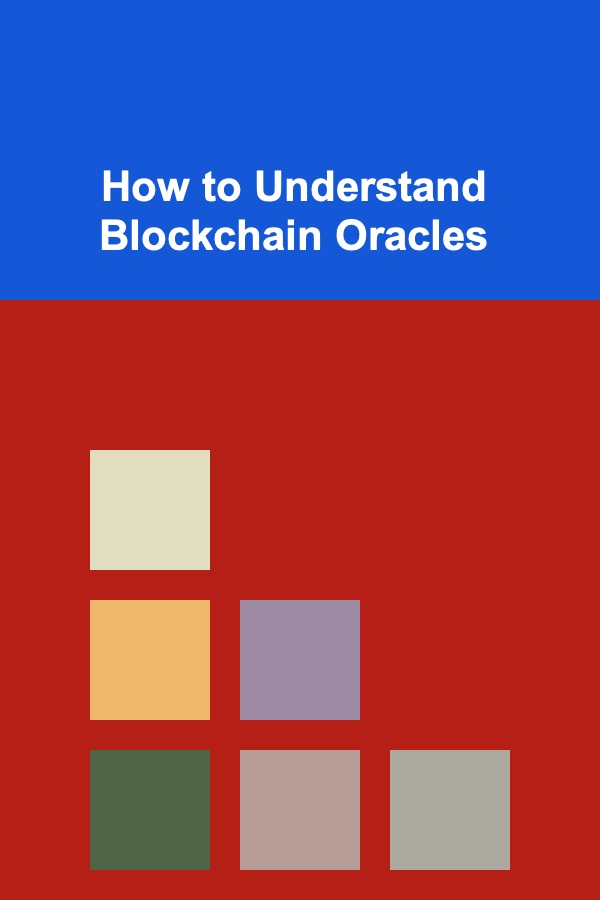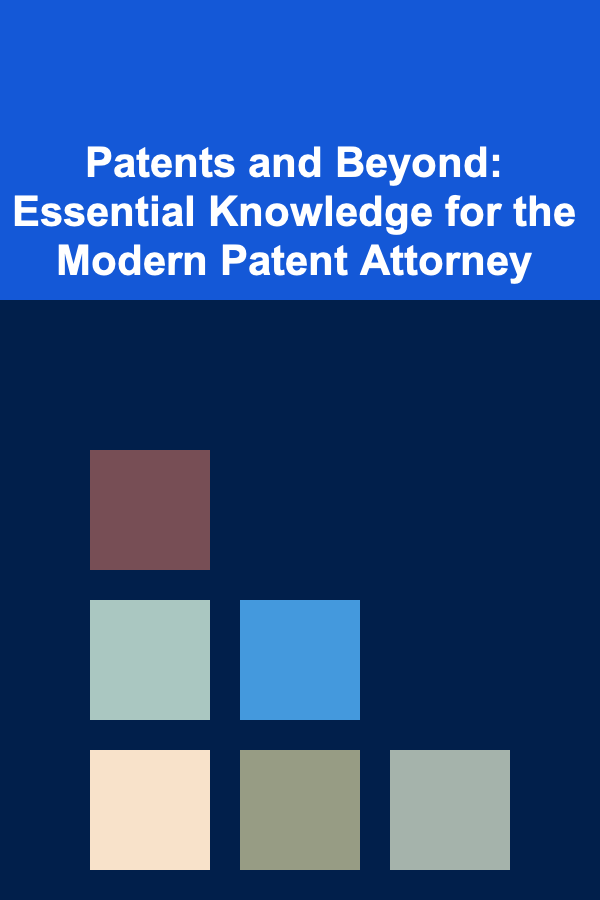
How to Understand Blockchain Oracles
ebook include PDF & Audio bundle (Micro Guide)
$12.99$11.99
Limited Time Offer! Order within the next:

In the world of blockchain, oracles play a crucial role in bridging the gap between the digital world of smart contracts and the physical world where real-world events and data occur. While blockchain itself is known for its decentralized and immutable nature, the data on the blockchain is only as reliable as the data it receives. This is where oracles come into play. They are essential components that feed external data to smart contracts, ensuring that decentralized applications (dApps) have access to real-world information.
In this article, we'll explore the concept of blockchain oracles, how they work, the different types of oracles, and their significance within the blockchain ecosystem. By the end, you should have a comprehensive understanding of blockchain oracles and their importance in the broader decentralized world.
What Are Blockchain Oracles?
At its core, a blockchain oracle is a third-party service or mechanism that provides external data to a blockchain. Since blockchains are inherently isolated from external systems, they can't access real-world information on their own. Oracles provide the necessary data to smart contracts, which are self-executing contracts with the terms directly written into lines of code.
For example, imagine a smart contract that releases a payment when a flight is delayed by a certain amount of time. The contract itself can't verify whether the flight is delayed; it requires an external data source, such as a flight tracker, to confirm the delay. The oracle connects the blockchain with the flight tracker's data, allowing the smart contract to execute based on real-world conditions.
Oracles thus serve as a critical interface between blockchains and the real world, enabling the execution of smart contracts that depend on real-world events and conditions.
How Do Blockchain Oracles Work?
Blockchain oracles operate as intermediaries that gather, verify, and deliver external data to a blockchain network. The flow of data typically follows these steps:
- Data Source: The oracle identifies a data source, such as a weather service, financial market, or IoT devices.
- Verification: In some cases, the oracle must verify the data from the source to ensure its authenticity and accuracy. This can involve cross-referencing multiple sources or using cryptographic proofs.
- Transmission: After verification, the oracle transmits the data to the smart contract on the blockchain.
- Execution: The smart contract on the blockchain then uses the external data to trigger predefined actions, such as releasing payments, triggering alerts, or making decisions.
The role of the oracle in this process is crucial: it provides the blockchain with data that it otherwise cannot access, making it possible for smart contracts to function in a decentralized, trustless manner.
Why Are Oracles Needed?
Blockchains are inherently closed systems, and they operate under the principle of immutability and decentralization. This means that once a transaction is recorded on the blockchain, it cannot be changed. While this provides a high level of security and trust within the blockchain itself, it also limits the ability of smart contracts to interact with the outside world.
Here are some common use cases where oracles are needed:
- Financial Contracts: Oracles can be used to fetch financial market data, such as the price of cryptocurrencies, stock market values, or commodity prices. This is essential for decentralized finance (DeFi) applications, where smart contracts need to react to price fluctuations.
- Insurance: In the case of parametric insurance, where a payout is triggered by an event such as a natural disaster, oracles can fetch real-time data from weather or disaster tracking systems to determine if the event has occurred.
- Supply Chain: In the supply chain, oracles can be used to verify the location and condition of goods as they move across different stages of the supply chain. This ensures that smart contracts can be executed based on real-time data about the products.
- Gaming and NFTs: Oracles can be used in gaming and NFTs to fetch external data, such as the outcome of a real-world sports game or random number generation for games and other collectibles.
In short, oracles are necessary because they provide the outside data that allows smart contracts to interact with the real world, making blockchain technology more versatile and functional.
Types of Blockchain Oracles
Oracles come in various forms, depending on the type of data they deliver and how they fetch and verify that data. There are several categories of oracles:
1. Software Oracles
Software oracles fetch data from online sources, such as APIs or web-based services. These oracles are ideal for fetching real-time information from the internet. For example, they could pull data about stock prices, weather reports, or news headlines.
Software oracles are typically used for:
- Price feeds: Fetching the current price of cryptocurrencies or traditional assets.
- Sports scores: Fetching results of sporting events or races for use in prediction markets or betting platforms.
- Weather data: Providing temperature, precipitation, or other environmental factors for insurance or supply chain applications.
2. Hardware Oracles
Hardware oracles provide data from physical devices. This could include data from sensors, GPS devices, or IoT devices. Hardware oracles are used to monitor real-world conditions and provide data to the blockchain.
For example, a hardware oracle might:
- Monitor the temperature of a perishable product in transit and send that data to a smart contract.
- Track the location of goods in transit using GPS and provide that information to the blockchain.
3. Inbound Oracles
Inbound oracles bring data from external sources to the blockchain. They act as the main channel of information for a blockchain system to access real-world events and conditions. Inbound oracles typically handle software or hardware data that is needed for executing smart contracts.
4. Outbound Oracles
Outbound oracles, on the other hand, transmit data from a blockchain to external systems. For example, a smart contract might trigger a payment to a supplier when a condition is met. The outbound oracle would then ensure that the payment is made on the external system (e.g., a bank).
5. Centralized Oracles
Centralized oracles rely on a single data source or entity to provide data. These oracles are generally easy to implement but present a potential point of failure. If the data provider becomes compromised or inaccurate, the smart contract may execute incorrectly.
6. Decentralized Oracles
Decentralized oracles rely on multiple independent data sources to verify and provide data, reducing the risk of a single point of failure. In this case, the oracle uses multiple sources and consensus mechanisms to ensure the accuracy of the data before it's fed into the blockchain.
Decentralized oracles are often preferred in trustless systems because they avoid the problems inherent in centralized oracles, such as data manipulation or downtime.
7. Consensus-based Oracles
Consensus-based oracles operate on the principle of aggregating information from multiple independent sources. These oracles gather data from various providers, and the data is cross-verified to ensure accuracy. Consensus algorithms are employed to reach an agreement on the most accurate data. This increases reliability and ensures that smart contracts only receive correct and verified data.
Challenges and Risks of Blockchain Oracles
While oracles are an essential part of the blockchain ecosystem, they also introduce several challenges and risks that need to be addressed:
1. Single Point of Failure
Centralized oracles are vulnerable to a single point of failure. If the data source becomes corrupted or goes down, it could cause issues with the execution of smart contracts. To mitigate this, decentralized oracles that rely on multiple sources of data can help ensure reliability.
2. Data Integrity
Since oracles pull data from external sources, the accuracy and authenticity of that data are paramount. If an oracle pulls incorrect or manipulated data, it can lead to the incorrect execution of a smart contract. The use of decentralized oracles and cryptographic proofs can help address these issues.
3. Latency
Oracles typically need time to fetch and transmit data. This latency can sometimes delay the execution of smart contracts, especially in time-sensitive situations like financial trades. Optimizing the oracle system to provide real-time data with minimal delay is critical.
4. Security
Oracles are often trusted third-party services, which can be vulnerable to attacks. Hackers could manipulate oracles to feed incorrect data into smart contracts. This is why decentralized oracles are gaining popularity, as they reduce the reliance on any single entity and increase the overall security of the blockchain ecosystem.
Conclusion
Blockchain oracles are fundamental components that enable smart contracts to interact with real-world data. Without oracles, the use of smart contracts would be severely limited, as blockchains alone cannot access external information. Oracles provide the bridge between the blockchain world and the external world, ensuring that decentralized applications can function based on accurate, real-time data.
While oracles present challenges, particularly related to trust and data integrity, advancements in decentralized oracles and consensus-based systems are helping to mitigate these risks. As blockchain technology continues to evolve, oracles will undoubtedly play a critical role in enabling the next generation of decentralized applications, DeFi platforms, and beyond.

How to Label Boxes for Easy Unpacking After the Move
Read More
How to Measure the Success of Your Advertising Designs and Adjust
Read More
How to Negotiate Bills and Services for Better Rates
Read More
How to Start a Blog and Monetize It for Extra Income
Read More
How to Use AI Tools to Boost Your Earning Potential
Read More
Patents and Beyond: Essential Knowledge for the Modern Patent Attorney
Read MoreOther Products

How to Label Boxes for Easy Unpacking After the Move
Read More
How to Measure the Success of Your Advertising Designs and Adjust
Read More
How to Negotiate Bills and Services for Better Rates
Read More
How to Start a Blog and Monetize It for Extra Income
Read More
How to Use AI Tools to Boost Your Earning Potential
Read More